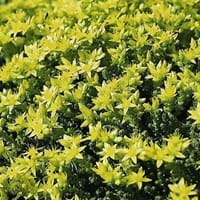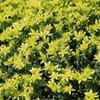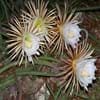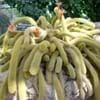Life Span
Perennial
Perennial
Origin
Central Asia
North America, United States, Northeastern United States, Mid-Atlantic United States, Southeastern United States, North-Central United States, Central United States, South-Central United States, Canada
Types
Not Available
Autumn Flame, October Brilliance, Tiliford
Habitat
Barren waste areas, Dry areas, meadows, Roadsides, Sandy stream banks
Forests, Wide range of ecological site
USDA Hardiness Zone
4-9
3-9
Sunset Zone
1a, 1b, 2a, 2b, 3a, 3b, 4, 5, 6, 7, 8, 9, 10, 11, 14, 15, 16, 17, 18, 19, 20, 21, 22, 23, 24
A2, A3, 1a, 1b, 2a, 2b, 3a, 3b, 4, 5, 6, 7, 8, 9, 14, 15, 16, 17
Habit
Cushion/Mound-forming
Oval or Rounded
Minimum Width
Not Available
Flower Color
White, Ivory
Red
Flower Color Modifier
Not Available
Bicolor
Fruit Color
Not Available
Red, Green, Brown
Leaf Color in Spring
Light Green, Sea Green, Blue Green
Light Green
Leaf Color in Summer
Light Green, Sea Green, Blue Green
Green, Dark Green
Leaf Color in Fall
Light Green, Sea Green, Blue Green
Yellow, Red, Orange, Yellow green, Gold, Dark Red, Orange Red
Leaf Color in Winter
Light Green, Sea Green, Blue Green
Not Available
Leaf Shape
Oblique base
Maple shaped
Plant Season
Spring, Summer, Fall
Spring, Summer, Fall
Sunlight
Full Sun, Partial Sun
Full Sun, Partial Sun
Type of Soil
Loam, Sand
Clay, Loam, Sand
The pH of Soil
Acidic, Neutral, Alkaline
Acidic, Neutral, Alkaline
Soil Drainage
Well drained
Average
Bloom Time
Early Summer, Summer
Early Spring, Spring
Tolerances
Pollution, Drought
Wet Site, Soil Compaction
Where to Plant?
Ground
Ground
How to Plant?
Leaf Cutting, Stem Planting
Seedlings, Vegetative Reproduction
Plant Maintenance
Medium
Medium
Watering Requirements
Needs very little water
Water Deeply, Water when top layer of soil becomes dry
In Summer
Lots of watering
Lots of watering
In Spring
Moderate
Moderate
In Winter
Average Water
Average Water
Soil pH
Acidic, Neutral, Alkaline
Acidic, Neutral, Alkaline
Soil Type
Loam, Sand
Clay, Loam, Sand
Soil Drainage Capacity
Well drained
Average
Sun Exposure
Full Sun, Partial Sun
Full Sun, Partial Sun
Pruning
Remove damaged leaves, Remove dead branches, Remove dead leaves
Remove dead branches, Remove dead leaves
Fertilizers
All-Purpose Liquid Fertilizer
General garden fertilizer, No need to fertilize every year
Pests and Diseases
Red blotch
Anthracnose, Bleeding canker, Decline, Fomes root rot, Ganoderma root rot, Laetiporus root rot, Leaf spot, Powdery mildew, Tar spot, Verticillium Wilt
Plant Tolerance
Drought
Soil Compaction, Wet Site
Flowers
Showy
Insignificant
Flower Petal Number
Single
Single
Foliage Texture
Bold
Medium
Foliage Sheen
Matte
Matte
Attracts
Bees
Not Available
Allergy
Irritation to stomach, Skin irritation
breathing problems, Eczema, flushing of face, Hives, Low blood pressure, Oral cavity, Rapid Heartbeat, Runny nose, Watery eyes
Aesthetic Uses
Beautification, Cottage Garden, Showy Purposes
Showy Purposes
Beauty Benefits
Reduce Bruises
Not Available
Environmental Uses
Air purification
Air purification, Wildlife
Medicinal Uses
Astringent, Hypotensive, Laxative, Vitamin C
Not Available
Part of Plant Used
Leaves
Whole plant
Other Uses
Used as Ornamental plant, useful as a ground cover
Edible syrup, Used as Ornamental plant
Used As Indoor Plant
No
Yes
Used As Outdoor Plant
Yes
Yes
Garden Design
Container, Groundcover, Rock Garden, Wall
Feature Plant, Shade Trees, Street Trees
Botanical Name
Sedum acre
ACER rubrum
Common Name
Stonecrop
Northern Red Maple, Red Maple
In Hindi
Stonecrop
लाल मेपल के पेड़
In German
Stonecrop
Red Maple Tree
In French
Orpin
Red Maple Tree
In Spanish
uva de gato
Árbol de arce rojo
In Greek
Stonecrop
Red Maple Tree
In Portuguese
Stonecrop
Árvore de bordo vermelho
In Polish
rozchodnika
Red Maple Tree
In Latin
Sedum
Rubrum Maple ligno
Phylum
Magnoliophyta
Magnoliophyta
Class
Magnoliopsida
Magnoliopsida
Order
Saxifragales
Sapindales
Family
Crassulaceae
Aceraceae
Clade
Angiosperms, Core eudicots, Eudicots
Angiosperms, Eudicots, Rosids
Tribe
Sedeae
Not Available
Subfamily
Sedoideae
Not Available
Number of Species
Not Available
Importance of Stonecrop and Red Maple Tree
Want to have the most appropriate plant for your garden? You might want to know the importance of Stonecrop and Red Maple Tree. Basically, these two plants vary in many aspects. Compare Stonecrop and Red Maple Tree as they differ in many characteristics such as their life, care, benefits, facts, etc. Every gardener must at least have the slightest clue about the plants he wants to plant in his garden. Compare their benefits, which differ in many ways like facts and uses. The medicinal use of Stonecrop is Astringent, Hypotensive, Laxative and Vitamin C whereas of Red Maple Tree is Not Available. Stonecrop has beauty benefits as follows: Reduce Bruises while Red Maple Tree has beauty benefits as follows: Reduce Bruises.
Compare Facts of Stonecrop vs Red Maple Tree
How to choose the best garden plant for your garden depending upon its facts? Here garden plant comparison will help you to solve this query. Compare the facts of Stonecrop vs Red Maple Tree and know which one to choose. As garden plants have benefits and other uses, allergy is also a major drawback of plants for some people. Allergic reactions of Stonecrop are Irritation to stomach and Skin irritation whereas of Red Maple Tree have breathing problems, Eczema, flushing of face, Hives, Low blood pressure, Oral cavity, Rapid Heartbeat, Runny nose and Watery eyes respectively. Having a fruit bearing plant in your garden can be a plus point of your garden. Stonecrop has no showy fruits and Red Maple Tree has no showy fruits. Also Stonecrop is not flowering and Red Maple Tree is not flowering . You can compare Stonecrop and Red Maple Tree facts and facts of other plants too.





